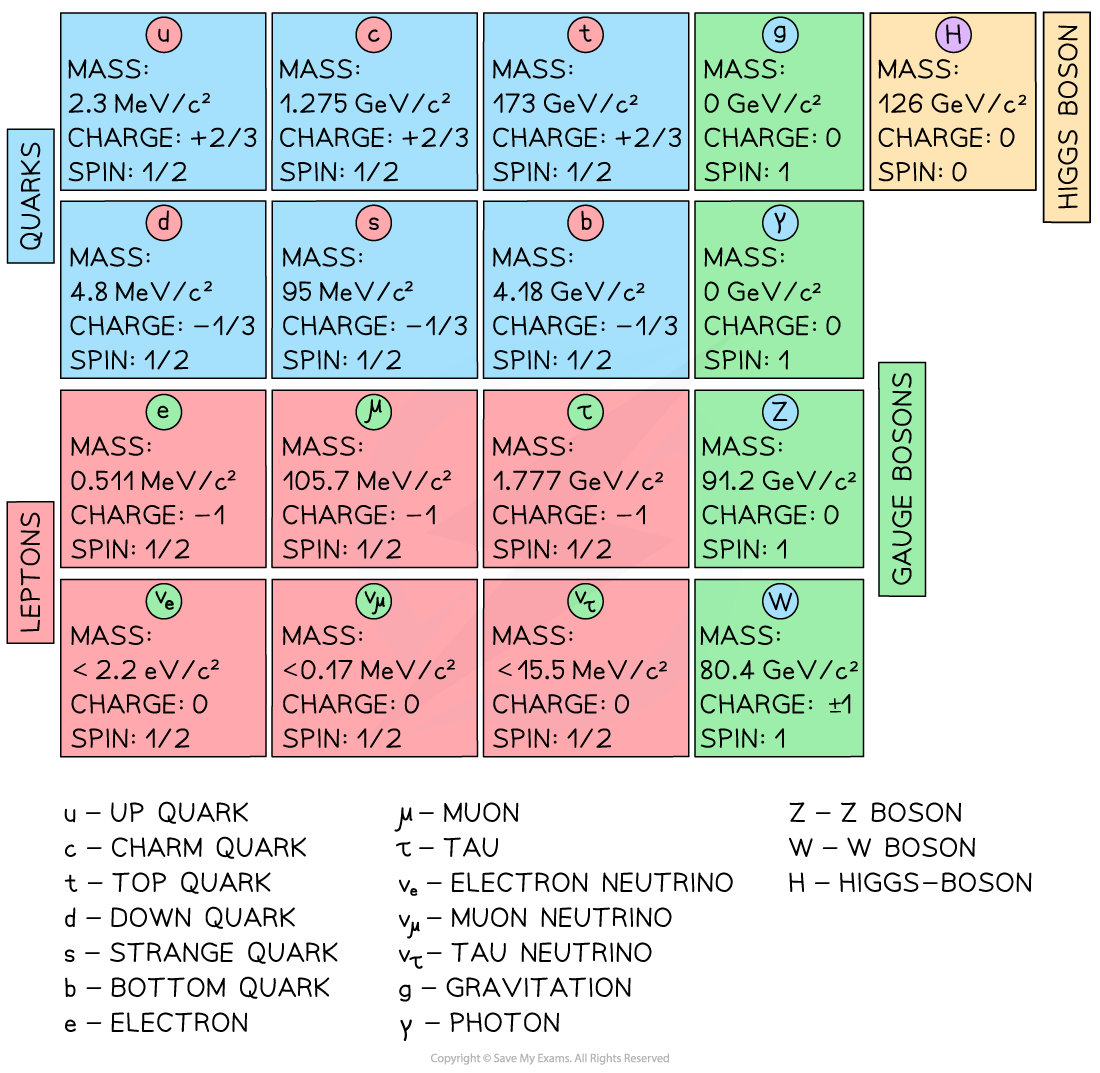The Higgs Boson
- The Higgs-boson was predicted in 1964
- The prediction included an approximate mass for the particle, at 125 GeV c–2
- This prediction came from the standard model, which required the photon, W and Z bosons to be massless
- While the photon is indeed massless, both the W and Z bosons have large masses
- This did not align with the standard model unless mass is not a property of the particle, but a property of space
- The field that gives particles their mass is known as the Higgs-field and the particle associated with this field is the Higgs-boson
- The Higgs-boson was eventually discovered in 2012 at CERN’s Large Hadron Collider (LHC) in Switzerland
- The Higgs-boson is responsible for the mass of all other particles in the standard model
- The quantum field theory that is responsible for this mechanism is beyond the scope of the IB DP Physics course
- Understanding the Higgs-boson mechanism is deeply complex
- However, the concept is an integral part of the standard model and particle physics
The Standard Model of Particle Physics
- The standard model describes the fundamental particles that make up other sub-atomic particles
- The standard model was developed through experimental discoveries and theoretical predictions
- The latest addition to the standard model was the Higgs-boson which was confirmed in 2012
- Particles are grouped into 4 major categories
- The quarks
- The leptons
- The gauge bosons
- The scalar bosons (or Higgs Boson)
- The particles of the standard model are used to produce larger, non-fundamental particles such as protons and neutrons

The standard model of particle physics
- The standard model explains a lot of the theory of physical interactions in our universe
- Yet, the standard model does not explain
- A complete relativistic theory of gravity
- The existence and nature of dark matter
- The existence and nature of dark energy and the expansion of the universe
- There is still room for improvement on the standard model and scientists continue to seek further answers and refine the current model
